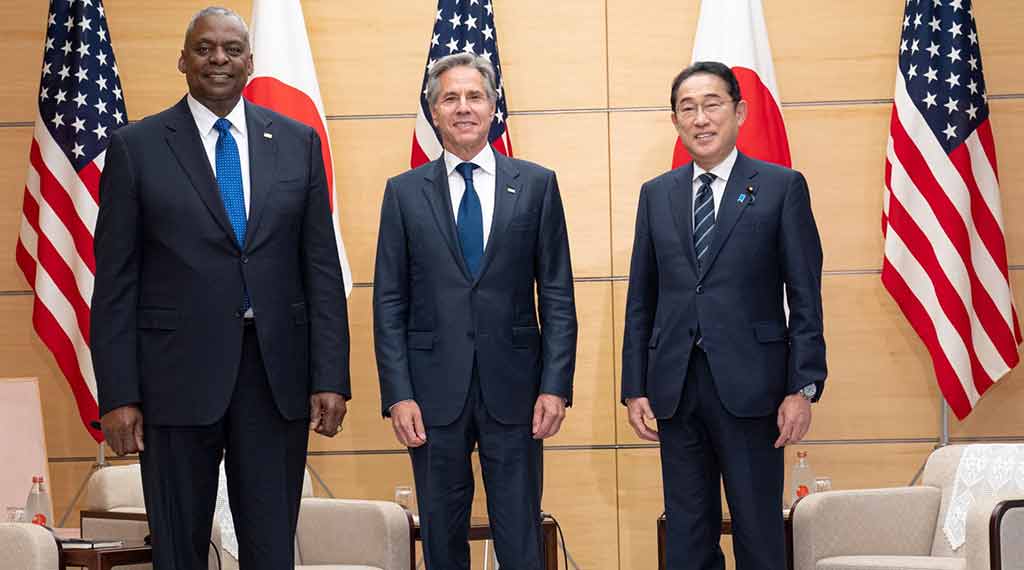
Editor’s Note: This piece by Henry Ridgwell features quotes from CSP Senior Fellow, Grant Newsham.
TOKYO — The United States this week moved to significantly strengthen its alliances in the Indo-Pacific amid a perceived security threat from China, including a major upgrade of the U.S. military command in Japan.
Washington and Tokyo insist the changes are purely defensive, but questions remain about the military readiness of the United States and its allies if conflict erupts.
The United States has around 55,000 troops stationed in Japan, with most of them deployed in the southern Okinawan islands. The Kadena Air Base outside the Okinawan capital, Naha, is America’s largest in the Pacific region.
…
Grant Newsham, a senior fellow at the Washington-based Center for Security Policy, welcomed the change.
“It’s a good first step … toward getting the Americans and the Japanese in a position where they can actually fight together,” he told VOA. “But what remains to be seen — and this is important — is how much authority will it have? What units will be assigned to it? What responsibility will it have in the event of a contingency?”
The U.S. and Japan also agreed to numerous other defense measures, including joint missile development and the possible deployment of American troops alongside Japanese forces in outlying islands.
Discussions also focused on so-called U.S. “extended deterrence” — whether Washington would be willing to use its nuclear weapons to defend Japan.
Japanese capabilities
Tokyo last year announced plans to double its defense spending to 2% of its gross domestic product by 2027.
Newsham said the Japanese military needs huge investment in recruitment, weapons and logistics.
“So, there’s a number of practical things that Japan needs to do to be ready to fight a war. And then you ask yourself, ‘Well, how are you going to actually link up with the Americans to fight? Have you done the necessary planning and training so that you can just fall right in and deal with a real-world contingency?’” he said.
There are fears that such a contingency is dangerously close. The U.S. and Japan on Sunday labeled China the “greatest strategic challenge” facing the region, amid Beijing’s rapid military buildup in the disputed South China Sea and ongoing military exercises around Taiwan.
Chinese President Xi Jinping has pledged to reunify the island with China, and there is speculation he is planning to do so by force.
- US Captures Maduro: Grant Newsham - January 6, 2026
- Seizing Taiwan Gets Harder for China’s PLA - January 6, 2026
- Communist China Telegraphs Its Punches - December 30, 2025
